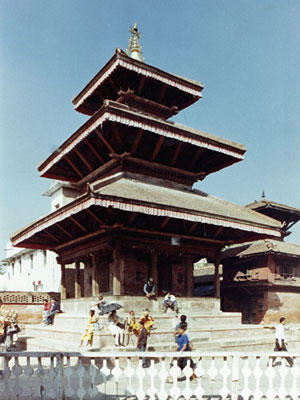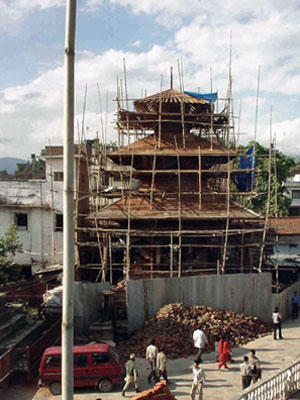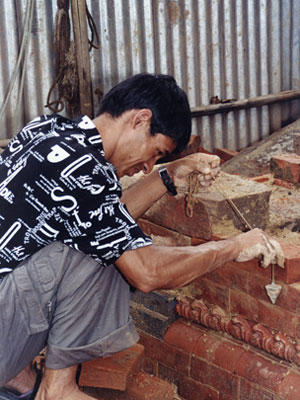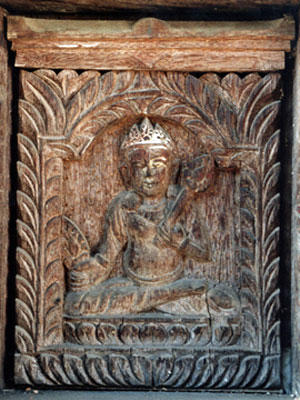Maha Vishnu Temple
Background
Maha Vishnu Temple, a seventeenth-century shrine to Lord Vishnu, is one of the dozen monumental pagodas that collectively define the character of the Kathmandu royal precinct. The temple was damaged in the Great Earthquake of 1934 and a scarcity of resources following the event only allowed for partial restoration work. The local community continued to worship inside the temple until active deterioration eventually forced it to close.
How We Helped
The project at Maha Vishnu Temple included both the stabilization and comprehensive restoration of the pagoda. Although only the historical plinth and timber carving fragments survived from the original building, photographic documentation from the 1920s facilitated reconstruction of the impressive original three-tiered pagoda. Working in conjunction with the Kathmandu Valley Preservation Trust, WMF repaired the damaged plinth, preserving as much historical fabric as possible, while new masonry and timber structures for the upper floors were erected using the traditional building methods. The iconographic program of the door and window elements, which could be surmised from surviving fragments, was studied and recreated.
Why It Matters
Unlike other cities in Nepal, Kathmandu and its cultural sites are increasingly threatened by population growth and development. The city's historic architecture is largely untouched in terms of conservation despite significant need. The restoration undertaken at Maha Vishnu Temple helped protect one of the city’s most significant sacred sites and was viewed as a major contribution to the urban character of the Royal Square.





